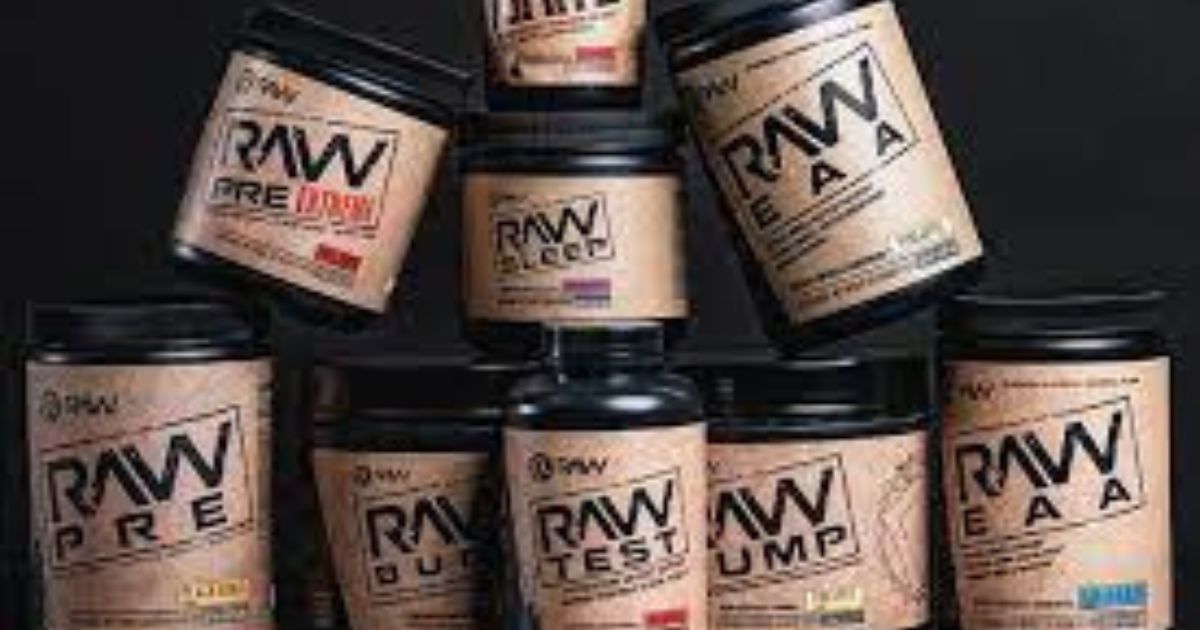Arby’s nutrition information is readily available on their website and includes detailed information about the caloric content, fat, and protein in their menu items. Arby’s is a well-known fast-food chain that offers a variety of quick and affordable options, ranging from sandwiches to sides.
Despite its convenience, fast food is often associated with being unhealthy, leading many to wonder about the nutrition facts of their favorite menu items. Thankfully, arby’s makes it easy to make informed decisions about what you’re eating. Their website offers a comprehensive breakdown of their nutritional information, including calorie counts, fat content, and protein levels for each menu item.
In addition, they also provide information about potential allergens, such as peanuts and gluten, making it simple for people with dietary restrictions to find something suitable to eat. By using this information, you can confidently enjoy your arby’s meal, knowing exactly what’s in it and making the best choices based on your nutritional needs.

Credit: www.sfchronicle.com
Unpacking The Truth About Arby’S Nutrition Information
Arby’s is a go-to food joint for many fast food lovers out there. However, have you ever stopped to think about the accuracy and reliability of the nutritional information provided on their menu? In this section, we will dive into the details and unpack the truth about arby’s nutrition information.
Discussing The Accuracy And Reliability Of Arby’S Nutritional Information
Arby’s Nutrition asserts that it provides accurate nutritional data to enable its customers to make well-informed choices about their food selection. However, this claim raises important questions such as:
- Are those nutritional values up-to-date and reliable?
- Is arby’s nutritional data third-party verified?
Here are some key things you should know about the accuracy and reliability of arby’s nutrition information:
- The nutritional information on arby’s website is deemed accurate by the company itself. However, it still leaves doubt, as there are no independent, third-party verifications that can back this claim.
- The displayed data is based on standard recipes and serving sizes and may vary according to regional preferences and special requests.
- Arby’s Nutrition makes an effort to update its nutrition information once or twice a year, but there is no guarantee that the changes it makes are accurate.
Examining The Sources And Methods Used To Obtain The Data
More than often, it is essential to evaluate the methods and sources used to derive the nutrition information in fast food joints. Arby’s uses a combination of methods to create nutritional information, including:
- Lab analysis: This entails breaking down the ingredients in each meal component and assessing them in the lab to determine their nutritional composition.
- Data analysis: Arby’s gathers raw data from various suppliers, which forms the basis for their nutrition information. The data is then analyzed using a nutrient database.
- Recipe analysis: This method involves analyzing all ingredients used in every recipe, including sauces and dressings.
Highlighting Any Gaps Or Discrepancies In The Data, And How It May Affect One’S Understanding Of Their Food Options
Arby’s nutritional information has some gaps and discrepancies that may impact your understanding of your food options. Here’s what you should be aware of:
- Sometimes, the listed nutritional data on the website, packaging, or in-store menus does not match up with the actual nutritional value of the meal or portions served.
- Different arby’s locations may use different methods to prepare meals, causing variances in nutritional values between locations.
- Some nutritional information may not account for extra condiments, toppings, or side dishes.
Arby’s nutrition information provides helpful data that you can use to make informed decisions about your food choices. That said, it’s essential to pay attention to the gaps and discrepancies in the data and take the information with a grain of salt.
The Ingredients In Arby’s Nutrition Meals
Arby’s is a popular fast-food chain known for its roast beef sandwiches, curly fries, and a variety of other mouth-watering items. However, have you ever wondered about the ingredients that go into making these delicious meals? In this section, we’ll take an in-depth look at the ingredients in some of arby’s popular menu items, highlighting any unhealthy or questionable ingredients and exploring the potential health implications of consuming them regularly.
Roast Beef Sandwich
- Arby’s classic roast beef sandwich is made up of thinly sliced beef and a sesame seed bun. The ingredients used to make the roast beef are beef, water, salt, and sodium phosphate.
- Sodium phosphate is added to enhance the flavor and moisture in the meat, but it can be harmful to our health when consumed in large quantities. Overconsumption of sodium phosphate can lead to kidney damage and has been linked to heart disease.
- The sesame seed bun contains bleached, enriched wheat flour, water, sugar, yeast, sesame seeds, and preservatives such as calcium propionate and potassium sorbate. Both of these preservatives can be harmful to our health when consumed in large quantities and have been linked to migraines, allergies, and behavioral problems.
Curly Fries
- Arby’s Nutrition famous curly fries are made up of potatoes, vegetable oil (soybean and/or canola oil), wheat flour, salt, and a variety of seasonings including paprika, onion, and garlic powder.
- While potatoes are a healthy source of carbohydrates, vegetable oil is high in trans fats that can raise cholesterol levels and increase the risk of heart disease. Consuming trans fats regularly can also cause inflammation, increase insulin resistance, and lead to weight gain.
- The wheat flour used to make the fries contains gluten, which can cause digestive issues for people with celiac disease or gluten sensitivity.
Jamocha Shake
- The arby’s jamocha shake is a popular dessert made with vanilla ice cream, arabica coffee, and chocolate syrup.
- While ice cream is high in sugar and fat, the real concern is the chocolate syrup used to flavor the shake. Chocolate syrup contains high fructose corn syrup, which has been linked to obesity, diabetes, and other health conditions.
While Arby’s Nutrition meals are certainly delicious, consuming them regularly can have adverse effects on our health. Understanding the ingredients and potential health implications can help us make informed decisions about what we eat.
Arby’S Nutrition Information: What’S Not On The Label
As consumers, we rely on nutritional labels to make informed decisions about what we eat, including at fast-food restaurants like arby’s. However, there’s more to the story than what you find on the label. In this post, we’ll explore the potential impact food preparation, common industry practices, and context can have on arby’s nutritional information.
Discussing The Potential Impact Of Food Preparation On Nutritional Information
The way we prepare food can impact its nutritional value in multiple ways, such as:
- Cooking methods, like frying, can add calories and fat to food, which may not be accounted for on the nutritional label.
- The addition of sauces and dressings can significantly increase calorie and sugar intake, again, without being reflected on the label.
It’s important to keep in mind that food preparation can alter nutritional information, so the labels may not be entirely accurate.
Examining Common Industry Practices That Can Lead To Discrepancies In Reported Nutritional Information
In the food industry, there isn’t a strict regulatory body that enforces nutritional labeling. While the fda sets nutritional labeling guidelines, it’s up to individual companies to determine how they measure and report their nutritional information. This can lead to discrepancies in reported values due to:
- Round-off error: Nutritional values are rounded to the nearest whole number, so an item with 0.4 grams of fat could be reported as having 0 grams of fat on the label.
- Testing variance: The same item can have differing nutritional content due to variances in testing methods.
- Ingredient sourcing: Nutritional values can differ based on the quality and type of ingredients used.
Highlighting The Importance Of Understanding The Full Context Of The Nutrition Information
While nutritional labels are a useful tool, they don’t necessarily provide the full context of arby’s food items. For example, a sandwich may have high levels of sodium per serving, but if you only eat half of the sandwich, you’re only consuming half the amount of sodium listed on the label.
Understanding how the item is prepared, portion size, and the foods you’re consuming alongside it is essential to truly understanding nutritional impact.
While nutritional labels at arby’s are useful for making informed decisions, there is more to nutritional information than just what is on the label. By understanding the potential impact of food preparation, common industry practices, and full context, you can make more informed food choices.
Making Informed Choices At Arby’s Nutrition
For those looking to make healthier dining choices while eating out, it can be a challenge to navigate the many fast-food options available. However, making informed decisions at Arby’s Nutrition is possible by following these practical tips:
- Consider portion sizes: Arby’s smaller sandwich options can help cut down on calorie intake. Opt for a junior roast beef sandwich instead of a traditional roast beef sandwich for a smaller serving size.
- Choose lean protein sources: When selecting a sandwich, opt for options like chicken, turkey, or roast beef rather than processed meats like bacon and ham.
- Avoid high-fat sauces: Be mindful of high-calorie toppings like cheese and mayo. Choose mustard or other lower-calorie sauces instead.
- Swap sides: Consider swapping out fries or onion rings for a side salad or apple slices.
- Watch for sodium: Many fast food options are high in sodium, so be mindful of toppings and sides. Try not to exceed the recommended daily intake of 2,300mg.
- Be mindful of beverages: Sugary drinks like soda can add unnecessary calories. Choose water or unsweetened tea instead.
Highlighting Healthier Options On The Menu
Thankfully, arby’s offers a variety of menu options for those looking for healthier choices. These lower-calorie options include:
- Farmhouse salad: This salad features roast turkey, hard-boiled eggs, diced tomatoes, and cheddar cheese. Opt for a lighter dressing like balsamic vinaigrette to keep calorie intake in check.
- Turkey and swiss wrap: With only 400 calories, this wrap is a great choice for those looking for a lighter option.
- Roast turkey and swiss sandwich: At just under 400 calories, this sandwich is a good source of lean protein.
Modifying Meals To Reduce Calories And Sodium
Lowering calorie and sodium intake at arby’s is possible with a few simple modifications. Consider opting for:
- Half the bun: By requesting a sandwich with only one bun, you can cut down on calories and carbohydrates.
- Grilled instead of fried: Ask for chicken or turkey to be grilled rather than breaded and fried to reduce calorie and fat intake.
- Sauce on the side: By requesting sauces on the side, you can control how much you consume and reduce calorie and fat intake.
- No cheese: Eliminating cheese from sandwiches and salads can help reduce calorie and fat intake.
- Smaller portions: Some sandwiches, such as the reuben, can be ordered in a smaller size to reduce calorie and sodium intake.
Frequently Asked Questions For Arby’S Nutrition Information
What’S The Nutrition Information Of Arby’S Most Popular Sandwich, The Classic Roast Beef?
The classic roast beef sandwich contains 360 calories, 14g fat, 38g carbohydrates, and 23g protein. It’s a good source of iron, but high in sodium.
Are There Any Healthy Options At Arby’S?
Yes, arby’s offers several healthy options. The roast turkey farmhouse salad with roast turkey, bacon, and chopped greens, and the roast turkey and swiss wrap are both good options that are lower in calories and fat.
How Much Sugar Is In Arby’S Curly Fries?
A small order of arby’s curly fries contains 8g of sugar, while a large order contains 17g. However, the seasoning mix used on the fries also contains sugar.
Is Arby’S Roast Beef Made With Real Beef?
Yes, arby’s uses real beef for their roast beef sandwiches. The beef is slow-roasted in-house and sliced thin for the sandwiches.
What Are The Vegetarian Options At Arby’S?
Arby’s doesn’t have many vegetarian options, but they do offer a few. The side salad, curly fries, and mozzarella sticks are all vegetarian-friendly.
Does Arby’S Offer Any Gluten-Free Options?
Arby’s doesn’t have a specific gluten-free menu, but they do offer a few gluten-free options, such as the roast turkey farmhouse salad, the classic roast beef without the bun, and the loaded curly fries without the seasoning. However, cross-contamination may occur in the kitchen.
Conclusion
Arby’s nutrition information provides vital information for individuals who want to lead a healthy lifestyle while still indulging in their favorite fast food. With an array of menu options, it’s crucial to understand how to make wise choices that will nourish your body while still satisfying your cravings.
By analyzing the nutrient values, one can make informed decisions about what to order and how much. It’s evident that arby’s offers options that cater to different dietary needs, including low-calorie, low-fat, and low-carb choices. However, it’s also essential to consider portion sizes as this affects the total calories, carbs, and fat consumed.
It’s recommended that you balance your intake to ensure your calorie and macronutrient requirements are met. Arby’s nutrition information is a valuable resource for anyone looking to make smart nutritional choices when dining out. Armed with knowledge, you can enjoy your favorite fast food without compromising your health goals.
Make informed decisions, maintain a balanced diet, and remember that moderation is key.




